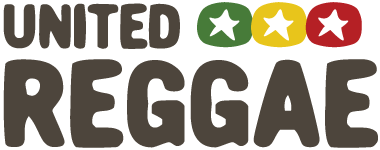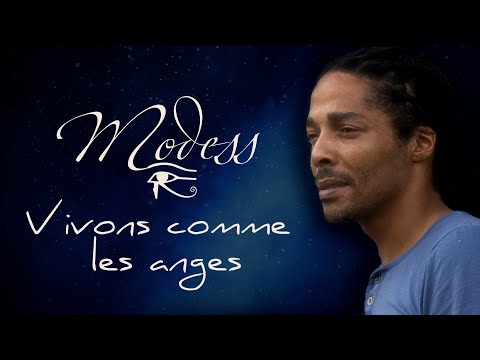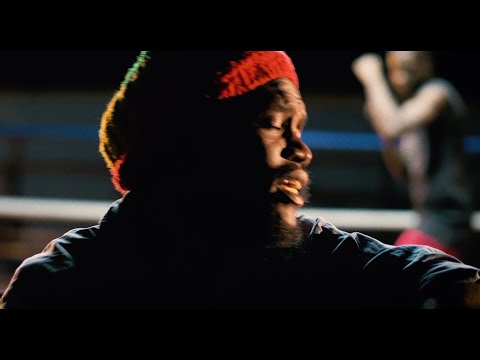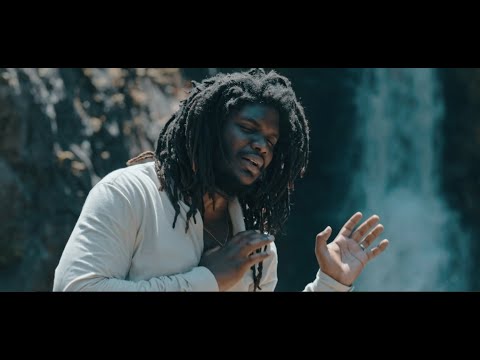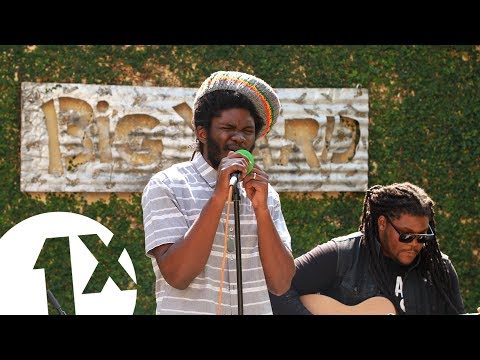Articles about reggae music, reviews, interviews, reports and more...
Interview: Marcia Griffiths in Kingston (Part 1)
- Home
- Articles
- Interviews
- Interview: Marcia Griffiths in Kingston (Part 1)

Interview: Marcia Griffiths in Kingston (Part 1)
"A voice said 'Little girl, you'd better start singing'"
Sampler
For nearly 55 years, Marcia Griffiths has reigned as First Lady of reggae singing. Neither the male-dominated industry in which she started, nor musical partnerships with Bob Marley and Bob Andy, could eclipse her talent.
Five decades since she was discovered, aged ten at a Kingston stage show, Marcia still maintains her powerful voice, unique sartorial style, and steely resolve that has kept her current through rocksteady, reggae, and dancehall. Attendees of her concerts today will hear Marcia sharing not only her own vast catalogue, but songs by her male and female peers.
When United Reggae meets her in Kingston for an interview at the start of March 2017, Marcia has been working at Penthouse studios. She’s voicing a project titled Marcia Griffiths Sings Studio 1, which typifies her policy of bringing the past up to date. Singing back hits from the label that first signed her in 1964 - at the one that gave her 90s and 2000s success - is testimony to her longevity and relevance.
The interview location was originally Penthouse but is moved to Marcia’s elegant, tranquil home near Mona. In her front room, puppies sit, temporarily caged, to avoid disturbance (yet still manage to escape from time to time!). Magazines on cycling, driving and other outdoor pursuits are left on the coffee table for visitors, calling to mind a doctor’s waiting area.
Wind chimes tinkle as Tarrus Riley and Chronixx play softly on the stereo. A lacework representation of Jesus adorns a wall saying “The world is in his hands”. Off the veranda is an enclave filled with multiple awards, portraits and photos – including a picture of Selassie and one of Marcia with boxing promoter Don King.
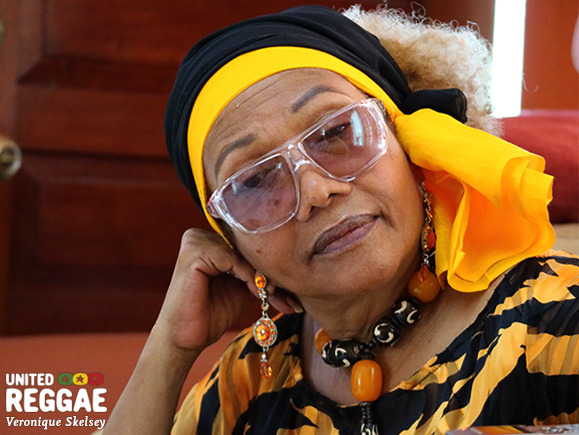
Marcia is in the shower. Eventually she appears in a stunning tiger pattern dress and head wrap. She is limping on two broken toes – the result of a fall at home. She says she has been warned by the doctor to keep wearing a cast or have surgery. Her friend, artist-manager Bridgett Anderson, goes out to buy her some snapper from Greenwich Farm. Marcia sits on the couch and our career-spanning two part discussion begins…
What happened to your foot?
I slipped right here. Stepped on somebody's slippers - the tough high ones. I myself was wearing platform slippers so I just stepped down on it and twisted. I was going to Florida, so by the time I got to the airport my feet were so swollen they had to wheelchair me to the plane. I had to come off [stage] in a wheelchair and go straight to the emergency. They x-rayed the foot and saw that two toes were broken.
Were you going to perform in Florida?
Yes. I had a performance there. I did it before I realised the seriousness but I was in so much pain! But even since I found out and I'm in this cast I have done three performances already! (Laughs) I went to the prison - Prison Oval - and I did a performance there for the prisoners.
How was the prison concert?
Oh, that was an experience for me. It was overwhelming. I saw some of the, you know, the famous people in there. The prisoners really enjoyed every song I drew. They just went wild! I'm so glad I could really touch their souls that day.
Did you talk to any of them afterwards?
Of course! They spoke with a lot of regrets for the things that they did. And you know what was most interesting? Someone stole my car years ago. I went to the supermarket here and when I came back all I saw was the spot where the car was parked. And he came to me in the prison to confess that he is the one who stole my car! And he was sorry and asked if I could forgive him!
And you did?
Of course. I said "Of course I forgive you". That was very interesting. I am sure that was a relief for him to come and confess to me.
When was your car stolen?
Oh Lord, a couple of years ago. That was the early 90s, yes. All this time! (Laughs)
Originally we thought we were going to do the interview at Penthouse. What are you doing at Penthouse right now?
I'm doing an album titled Marcia Griffiths sings Studio One. And I can tell you as I sit here, it is so interesting. As a Studio One artist, some of the songs that I am now doing, I never even realised that they were Studio One songs. Songs that I loved! Really, really loved.
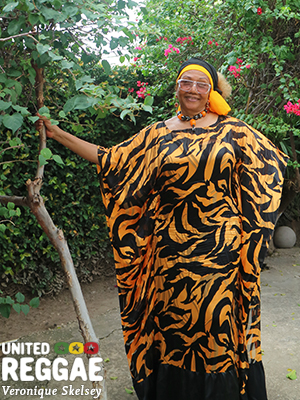 How much of the album is your own Studio One songs that you sang and how much of it is other people's Studio One songs?
How much of the album is your own Studio One songs that you sang and how much of it is other people's Studio One songs?
I have quite a catalogue at Studio One. In the 60s I did quite a string of hit songs written by Bob Andy. But I was now focusing on the songs from other people like the Wailers, Jackie Opel, Don Drummond.
Who is playing on the rhythms?
We have some young musicians playing these rhythms. Kirk is on drums.
Kirk Bennett.
And we have different bass players for different songs.
But it's young musicians getting their chance to play on the Studio One rhythms?
Well, you know I always rub shoulders with the younger ones to keep myself in the current light.
We’ll come back to that later. I'm going to go back to the beginning and ask you - where were you born?
I was born in West Kingston. In Hannah Town.
And your father was a carpenter?
Yes, he was a carpenter. And also a singer. I guess that he is the one that I got the talent from. He loved to sing. He wasn't one of those singers going to places and singing. I just know he had a beautiful voice and we used to do concerts at the school we went to and he would sing songs from Nat King Cole.
Did he sing in church as well?
Yes, he did. I also sang in church.
What about your mother?
Well, she wasn't a singer at all. She was a housewife. She was so humble and quiet. There was nothing else that she would prefer doing that just staying at home - and making the best dinners for us.
Who were your female role models when growing up?
Wow. Well, we were influenced by American music and American singers in the early years. So I used to listen to people like Aretha Franklin. She was definitely my influence. That was my favourite. And Patti LaBelle. Even though the first song I sang on stage was Carla Thomas - No Time To Lose. But I loved all those female singers. Dionne Warwick, Nancy Wilson, those are my favourite singers.
 Aretha Franklin. She was definitely my influence
Aretha Franklin. She was definitely my influence
So where did you first sing in front of people - was it in church?
Well, on a smaller level. But the first time I went on a big stage was Easter Monday morning 1964. My birthday is in November so Easter I was not yet 11. I was going to be 11 in November 1964.
Where was that – the Carib Theatre?
The Carib Theatre. They usually had morning concerts.
Byron Lee was playing.
Byron Lee was playing with the Dragonaires.
How did you end up singing on that particular show?
That was an interesting story. Because Philip James – he was from a famous duo in Jamaica - the Blues Busters. And Philip James had a girlfriend who was living next to me. He came to visit her one night and heard me singing right by the gate where I lived. He said "Wow, I've never heard a little girl sing like that!" and he asked me to sing something else. I did something else and he said that he had to get me on that concert. And he was really overwhelmed with my voice.
 Philip James said "Wow, I've never heard a little girl sing like that!"
Philip James said "Wow, I've never heard a little girl sing like that!"
When he went to Byron Lee, Byron Lee said "No way! My show is already planned and everything is set, so there is no way anyone can come on it". And he said "Yes, you have to put her on". Anyway, they called me to the rehearsal and believe me, the one song I had was No Time To Lose and I rehearsed it even though they were so reluctant to rehearse me.
And finally on stage when they introduced me, the band decided that they were going to sabotage me. Before the whole audience. And I am there as a little young girl listening for the intro because the guitar starts the song before I can come in. Nothing was playing. Just fumbling and some unusual things. And I didn't know any better so I was turning around looking at them you know? Questioning, "What's going on?" And a voice said to me, because I know that God is always with me, a voice said to me "Little girl, you'd better start singing" because the audience was getting uneasy. And I just started the song all by myself and they had to follow me.
And listen to me, if you dropped a pin in that theatre you could hear it. Because in those days when you tried to sing somebody else's songs you would emulate them to a tee. Every T you would cross, every I you would dot. And I wanted to sound just like Carla Thomas so that if you closed your eyes you would believe that was Carla Thomas. So every slur I made, the audience just went up wild. I was anxious - I was never nervous - I was just anxious to go and show them what I could do. Because I was positive. And that went down beautifully.
And that led to you going to Studio One?
It was the same day that I was taken to Studio One.
Who took you to Studio One?
Lynford Anderson.
Andy Capp.
He was working at the radio station and he took me straight to Studio One and told Mr Dodd that he had a little girl that could sing. I didn't even do an audition. I just went straight in.
Because they had seen the concert!
Yes! (Laughs)
None of that “Come back next week” stuff!
Right!
And is it true that Byron Lee's manager wanted to sign you as well?
Ronnie Nasralla was ready to sign me and then Mr Dodd, Coxsone, he also wanted to sign me. So it was a fight like a tug-of-war. And my father was in the middle of everything because I was underage, so my father was everywhere that I was performing. He was the one who had to make the decision. He was asking me but I didn't know!
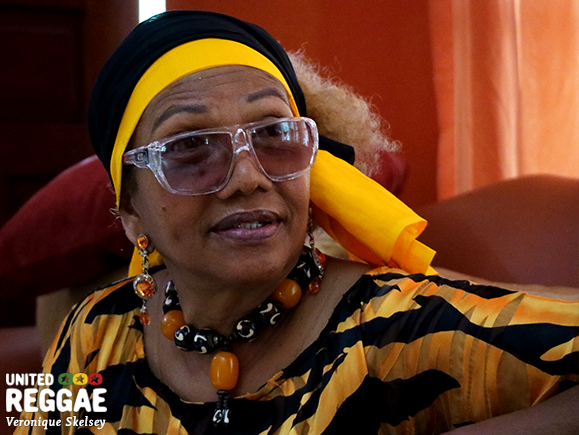
But you did decide on Coxsone. What was the decision based on?
I don't know. I heard all of my young days about Studio One. I knew it was Jamaica’s Motown and all the artists that I used to listen to as a little girl - the songs were from Studio One. I didn't know anything else or anywhere else. So I guess that's where I wanted to be with all the Bob Marley and the Wailers you know?
And your first song at Studio One was Wall Of Love?
Yes. That was the first song I went in and did. Up until this day that song was never released. And it was a duet. The guy who wrote that song was supposed to be singing that song with me but he was very nervous in the studio. The musicians were sitting there, waiting to hear the song so they could try to find the chords. So Jackie Mittoo said to me "Little girl, do the song" and I said “Yes”. And I sang the song, so I ended up doing it all by myself. He was very upset but… that was my first recording.
You did do quite a few duets early on.
Yes. I did You’re Mine with Tony Gregory, I did Really Together with Bob Andy, and another guy was there - Owen Boyce...
Don't Cry Baby.
Yes!
And you did Oh My Darling with Bob Marley as well?
Yes, Oh My Darling. Well you know, all of these recordings, Coxsone was doing everything to find the right song. Because he was so overwhelmed with my voice that he just wanted me to have a hit song. So this was all in search of that song.
So you must have felt supported by Coxsone in those early days?
Very much. In those days, he portrayed a father figure for everybody. He was a father figure for Bob Marley and the Wailers, and you know, a young girl like me, he was like a father for me.
 Coxsone was like a father for me
Coxsone was like a father for me
At the time you started there weren't so many female singers.
Yes. Hortense Ellis was there at the time. And after that Patsy started to do one or two things with Mrs Pottinger. And who else?
Phyllis Dillon?
Phyllis was at Duke Reid.
And was Doreen Shaffer still singing then?
Yes. Doreen yes. She became like a member of the Skatalites.
How involved was Coxsone in the supervision of the recordings? Because I've heard different things from different people about his level of involvement with their music. Obviously Jackie Mittoo was very involved.
Well, Jackie as a musician, he was one of the greatest musicians that I've known up to this day. And he was never able to read music. It was all by ear. But sometimes Mr Dodd would get a vibe and he'd come in the studio to give a vibe or whatever, on certain songs. And he would actually put down his voice on certain little parts, depending on the song. But a real producer is the one who, like a Jackie, he tells you what to play, the bass-line or the drum pattern or whatever. Mr Dodd was mainly the person who provided the studio there and the facility for us to go in. It was such a beautiful family affair at Studio One. Beautiful.
 It was a beautiful family affair at Studio One
It was a beautiful family affair at Studio One
One of the things that Coxsone did was draw from his a big collection of foreign music and say to Jackie Mittoo "Why don't we do this song?"
Oh yes. When he went overseas he would come back with Curtis Mayfield and the Impressions albums for Bob Marley and the Wailers, and he would bring back female albums for me. Ken Boothe or Delroy Wilson would get a male artist. I did quite a few covers of songs that were never really released. Maxine Brown and different singers.
But of course songs were being written for Studio One by Bob Andy. I believe it's right that you had met Bob before Studio One?
That's right. Yes. I met him before I started singing. I went to the rehearsal for Paragons. It was out in the east side in Rockfort. They were rehearsing at somebody's house and my friend invited me there so I went there and met Bob Andy. I said to them "I can sing you know?" (Laughs) And they said "Yeah? What you can sing?" and I did Patti LaBelle’s Down The Aisle. That song was popular at the time. So when they came to Studio One and saw me I remember Barry, one of the Paragons, saying "Hey, look who's here! Patti LaBelle!" (Laughs) Mockingly, you know? So that's where everything started with Bob Andy and myself.
When I was here last year Bob Andy told me he left Paragons because he wanted to write his own songs and the others weren't feeling that so much.
Yes.
He'd heard Bob Dylan and was inspired.
Yes! I'm telling you, he was inspired by Bob Dylan. Because we had so many Bob Dylan albums.
 Bob Andy was inspired by Bob Dylan
Bob Andy was inspired by Bob Dylan
How did he start to work directly with you at Studio One?
Well, at Studio One everybody worked as a family. If I was recording, other singers like Bunny Wailer or Rita would come in and everybody would sing harmony on each other's songs. So I don't remember how Bob came to do the first song for me but I think the first song was Mark My Words? And then Melody Life, Truly… Feel Like Jumping was Jackie Mittoo and Bob Andy himself.
What are your memories of how Feel Like Jumping was created? That's a song that people still love anywhere you go in the world, whether they know Jamaican music or not.
Yes that's true. You know something? If I can remember well, it was like a vibe in the studio that day with Jackie and the bass-line and everything came up and the song was just written right there on the spot between Jackie and Bob Andy.
Because the lyrics are very natural and spontaneous. It's just “souling”.
Yes, yes. “Feel like jumping, feel like shouting”, you know? It was just something to go along with that rhythm that was so… Everybody was just loving it in the studio.
Do you think Feel Like Jumping inspired the rhythm to Toots’ 54-46? There is some similarity in the bass-line.
Yes. I don't remember when Toots 54-46 came out. And funnily enough I spent the whole day with Toots yesterday! (Laughs) I wish I'd asked him! In the studio we were doing a song together. It was one of the same tracks from the Studio One album. I was doing his Never Grow Old.
Who else did Bob Andy help in the business? Willie Williams has said that Bob took him to Studio One. He obviously helped you a lot.
He wrote quite a few songs for different artists. He wrote a beautiful song for Delroy Wilson - It's Impossible. And there is a particular song which is one of my favourite songs that Ken Boothe does which was a letter that Bob himself wrote to me, which became a song. I Don't Want To See You Cry.
This was when you had become romantically involved with Bob? What happened that day that meant he didn't want to see you cry?
Well, I guess he was going through some changes in just knowing about Rastafari. He had a brethren who encouraged him not to stay in a house or sleep on a bed and they went up in the mountains, in the hills, out by Wareika Hill. He just left the house like that and I just couldn't understand what was going on. So he came one day and I wasn't there and he wrote that - all those lyrics and left it on my dressing table and I read it. "I don't want to see you cry, I've got to tell you goodbye, but I don't want to see you cry" - everything that became the song.
What were your views on Rastafari at the time?
Well, at that time I never had any belief in that religion. But when I came to understand what it is, I found out that it is another extension of Christianity. Because being a Rastafarian is living up-full like being a Christian and doing the right things. The hair was not important. It was not about hair or clothing. It's livity. It's all about livity.
 I remember Mr Dodd chasing Harry J from his gate, threatening him every time he appeared!
I remember Mr Dodd chasing Harry J from his gate, threatening him every time he appeared!
Why did you leave Coxsone?
I left Studio One because year after year we realised that survival is the name of the game. We were there singing but it's like a 9-to-5 job. We'd go there in the morning and we didn't leave there until night. We were always in the studio and all we’d get is just one patty for lunch and that's it. We needed money to survive and he wasn't giving us any. I remember the first time he told me about some royalties was Feel Like Jumping and Words, another collaboration. And it was like, I don't remember if it was 2 pounds, or what it was?
One of the reasons why we left was Harry J came to the studio up at Mr Dodd’s to invite us down to his studio, telling us that he can do better for us. Because, by this time, I was getting all the awards year after year. Best female singer, every year. So everyone knew my name and he wanted me to come to start recording. I remember Mr Dodd chasing Harry J from his gate, threatening him every time he appeared! (Laughs)
At Harry J you and Bob had some considerable success.
Yes! We decided we'd give it a try. And we went there and I did a couple of recordings - Put A Little Love In Your Heart and Don't Let Me Down.
I own that record. I spent years trying to find it. I have a Harry J blank test press.
Oh wow! I have so many messages from England. People looking for that song.
It's a wonderful interpretation of the Beatles song.
Yes, and I also did My Love which is another song that people try to get everywhere and are unable to find it. I covered that one by Paul McCartney too.
Tell me about the success of another cover you and Bob sang as a duet - Nina Simone's Young Gifted and Black.
That was late in 1969 I think. I was going into 18 years old. I went to Germany with Fab Five who were then called The Reggaes. And on my return to Jamaica after a successful tour in Munich, when I came back I got the news that because of Young Gifted and Black we had to go to England to do Top of the Pops because it was at number two in the British charts. And I was saying "My God! How am I going to do this?" Because I had to go back! Mr [Harold] Huber from Germany loved the ground I walked on. And he just signed me. I just signed a contract with Mr Huber to return to Germany, and here I am coming back now hearing that I have to go to London and I didn't know what to do! So I breached the man's contract and went to London with Bob and Harry J to do Top of the Pops.
How was that experience in England?
Beautiful. It was really lovely because we had a full orchestra - strings and everything. It was a lovely experience for me. We stayed back in England and I think we went to Amsterdam to do a television programme when, lo and behold, who appeared? Mr Huber from Germany! He heard about all that was happening and I had a contract with this man and this man came into the television studio and said I cannot go on stage unless I'm going to leave and go back to Germany with him. Everything was just happening so fast!
How did you get out of that situation?
I promised him that I would leave. So I did the show and I asked him if Bob could come along and he said “Yes” so all of us went back and I did a couple of things that I had committed myself to do. Because he was such a nice person to me.
Harry Johnson got a JARIA award last week and his daughter accepted it on his behalf. What are your memories of Harry J?
Oh! Boy, Harry J was such a … He was a very clean human being. Very few people I say that about. He honestly loved the music. He never had any talent but somehow he could recognise a hit song. And for some strange reason, Bob will tell you, we were always lucky with him. That combination just worked!
What about Sylvan Morris who engineer was at Studio One and Harry J?
He was the engineer! He was good. He was always talking. He was a person with a lot of knowledge. I think he was a Rosicrucian and he would talk, tell us about a lot of things and give us lots of information. Everything in that studio just came together. The engineer, Harry J, the musicians that were there, like Ansel Collins and all those other people, he had a steady set of musicians. Well, between the engineer and Harry and everybody it was a complete success.
Comments actually desactivated due to too much spams
Browse by categories
Recommended Articles
Latest articles
Recently addedView all
© 2007-2026 United Reggae. All Rights Reserved. Reproduction in whole or in part is prohibited. Read about copyright
Terms of use | About us | Contact us | Authors | Newsletter | A-Z
